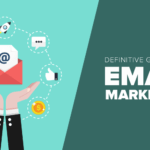If you’ve been running PPC campaigns without fully optimizing your audience targeting, you’re missing out on a powerful opportunity to maximize your return on investment (ROI). PPC advertising thrives on precision, and the more tailored your campaigns are, the better results you can achieve. Understanding how to pinpoint the right audience for your ads is crucial to getting the most out of your paid campaigns.
In this post, we’ll dive into actionable PPC audience targeting strategies that can help you reach the right people, at the right time, with the right message—ultimately leading to better engagement and more conversions. Let’s explore how to fine-tune your audience targeting and skyrocket the success of your PPC ads.
What is PPC Audience Targeting?
Pay-per-click (PPC) audience targeting is the practice of identifying and reaching specific groups of people who are more likely to be interested in your product or service. Instead of casting a wide net and hoping for the best, audience targeting allows you to refine your campaigns to hit those who are most likely to convert. The result? Higher ad relevance, improved click-through rates (CTR), and ultimately more bang for your advertising buck.
It’s worth noting that PPC audience targeting isn’t just about narrowing your focus—it’s about making your ads more relevant. By ensuring that the right people see your ads, you increase the chances of clicks, engagement, and conversions. And as we all know, relevance is a key factor in determining ad quality score, which directly influences how much you pay per click.
Why is PPC Audience Targeting So Important?
Audience targeting is essential because it allows you to allocate your ad spend where it matters most. Instead of wasting your budget on irrelevant clicks, you can focus your resources on attracting potential customers who are more likely to take action. Research supports this too: targeted ads are nearly twice as effective at converting leads compared to non-targeted ads.
In today’s hyper-competitive digital advertising space, personalization is critical. The more relevant your ads are to the audience, the higher the chances they’ll resonate and lead to conversions. For businesses with limited budgets, this is crucial because you want every dollar spent to move you closer to your goals.
Let’s look at some data that highlights the importance of audience targeting:
- Google found that personalized ads are 2x more likely to result in conversion than generic ads.
- Marketers who use audience targeting are 60% more likely to hit their campaign goals than those who don’t.
Now that we’ve established the importance of audience targeting, let’s jump into the strategies that can help you do it effectively.
7 Effective PPC Audience Targeting Strategies You Can Use Today
1. Remarketing: Reconnect with Previous Visitors
Remarketing (or retargeting) is a highly effective way to re-engage people who have already interacted with your website but didn’t convert. Remarketing allows you to show ads to people who previously visited your site, encouraging them to return and complete an action such as making a purchase, signing up for a newsletter, or filling out a form.

Remarketing campaigns are particularly effective because they target users who already have some level of interest in your product or service. These users have previously shown intent, and a well-timed remarketing ad can nudge them toward making a purchase decision. For instance, if someone added a product to their cart but didn’t check out, you can show them specific ads reminding them of the product, offering a discount or free shipping.
How to Implement Remarketing?
To get started, you’ll need to place a remarketing tag (or pixel) on your website, which tracks visitors. Platforms like Google Ads or Facebook allow you to create custom audiences based on site visitors, and you can tailor your ads to different segments depending on their behavior.
Pro Tip:
Use dynamic remarketing to show visitors ads that include products or services they viewed on your website. This personalized approach can significantly improve your conversion rate.
2. Demographic Targeting: Tailor Ads to Specific Groups
Demographic targeting allows you to filter your audience based on specific criteria like age, gender, income, education, and even relationship status. This can be a game-changer for businesses that cater to specific groups of people.
For example, if you’re promoting high-end beauty products, you might want to target women within a certain age group and income bracket who are more likely to be interested in luxury items. Similarly, if you sell software for small businesses, you could target business owners or decision-makers with specific job titles and education levels.
How to Use Demographic Targeting?
Platforms like Google Ads, Facebook Ads, and LinkedIn Ads offer advanced demographic filters. You can use these to exclude irrelevant demographics (e.g., excluding users outside a certain age range) or to bid higher on key demographics that are more likely to convert.
Pro Tip:
Run split tests by targeting different demographic groups with tailored messaging to see which performs best. A/B testing allows you to optimize your campaigns continuously.
3. Custom Audiences: Personalize Ads for Specific Segments
Custom audiences allow you to use your own data—such as customer lists or website traffic—to create hyper-specific audience segments. This can be incredibly powerful, as you’re targeting people who have already engaged with your brand at some level.
By uploading your email list, for instance, you can target existing customers or leads with personalized ads. You can also create custom audiences based on website activity, app interactions, or even previous ad engagement.
How to Use Custom Audiences?
Let’s say you’re launching a new product. You can create a custom audience of users who previously bought from your site or signed up for your email list and show them ads announcing the launch. This level of personalization can dramatically improve ad relevance and engagement.
Pro Tip:
Use customer matches to cross-sell products or target previous customers with upsell opportunities. Tailoring your messaging to users based on their past interactions can lead to higher conversion rates.
4. In-Market Audiences: Target People Actively Looking for Your Product
In-market audiences are groups of people who are actively researching or comparing products or services in specific categories. These individuals are highly motivated and close to making a purchasing decision, making them prime targets for your PPC campaigns.
Google Ads, for example, offers predefined in-market categories such as auto buyers, home improvement shoppers, or travel enthusiasts. You can target these high-intent users with ads that speak directly to their current needs.
How to Implement In-Market Audiences?
By selecting relevant in-market categories, you can place your ads in front of users who are actively searching for products or services like yours. These audiences are closer to conversion than general interest-based audiences, which makes them highly valuable.
Pro Tip:
Pair in-market audience targeting with timely promotions or limited-time offers to create urgency and encourage quick conversions.
5. Lookalike Audiences: Expand Your Reach with Similar Profiles
Lookalike audiences help you reach new people who are likely to be interested in your brand because they share characteristics with your existing customers. This is a fantastic way to scale your campaigns while maintaining a high level of relevance.
Lookalike audiences are built by platforms like Facebook or Google, which analyze the behavior and demographics of your current audience to find new users with similar traits. These new audiences are more likely to convert because they already resemble your best customers.
How to Create Lookalike Audiences?
Start by uploading a list of your best customers or highest-value leads. Then, the platform will use its algorithm to find users who match that profile. Lookalike audiences can be adjusted for size, allowing you to cast a wider or narrower net.
Pro Tip:
Use high-quality seed data when creating lookalike audiences. The better your initial audience list, the more effective your lookalike audience will be.
6. Interest-Based Targeting: Reach Users Based on Their Passions
Interest-based targeting allows you to show ads to users based on their hobbies, passions, and interests. Platforms like Facebook and Google collect data about users’ online behavior and use that data to create interest-based categories.

For example, if you’re selling fitness equipment, you can target people who are interested in health and fitness, workout routines, or healthy eating. This is a great way to expand your reach to potential customers who may not have heard of your brand but are interested in what you offer.
Pro Tip:
Combine interest-based targeting with contextual targeting (showing ads on relevant websites or content) to increase your chances of reaching engaged users.
7. Geotargeting: Focus on Specific Locations
Geotargeting lets you narrow your audience by location, which is especially useful for businesses that serve local or regional markets. By focusing your PPC ads on specific geographic areas, you can ensure that only users within a certain radius or location see your ads.
How to Use Geotargeting?
This strategy works particularly well for brick-and-mortar businesses or service providers with a limited delivery area. You can also use geotargeting to focus on regions where you see the highest sales or where your competitors are underperforming.
Pro Tip:
Use hyperlocal targeting to target users in very specific locations, such as targeting mobile users within a mile of your store. This can help drive foot traffic and increase local engagement.
Additional Tips for Optimizing PPC Audience Targeting
Here are a few more tricks to keep in mind when honing your PPC audience targeting strategy:
- Use negative targeting: Exclude audiences that aren’t likely to convert (e.g., low-income users for luxury brands).
- Adjust bids based on audience performance: Bid higher on audiences that are more likely to convert.
- A/B test audience segments: Continuously test different audience segments to see which ones yield the best results and optimize your campaigns accordingly.
- Monitor audience performance: Regularly analyze how different audience segments perform in terms of CTR and conversion rates. This will help you refine your targeting strategy over time.
- Stay updated on audience insights: Platforms like Google Ads and Facebook regularly release new audience insights and targeting options. Staying updated can give you an edge over your competition.
Conclusion
Mastering PPC audience targeting is essential for maximizing the effectiveness of your ad campaigns. By employing the strategies outlined in this article—such as remarketing, demographic targeting, custom audiences, in-market audiences, lookalike audiences, interest-based targeting, and geotargeting—you can ensure your ads reach the right people at the right time.
As you implement these strategies, remember to analyze your data, refine your approach, and continuously test new tactics. The digital advertising landscape is always evolving, and staying ahead of the curve requires a commitment to adaptation and optimization.
Effective audience targeting not only enhances your PPC campaign performance but also fosters meaningful connections with your audience, leading to higher engagement and improved ROI. So, why wait? Start applying these audience-targeting strategies today and watch your PPC campaigns soar to new heights!



